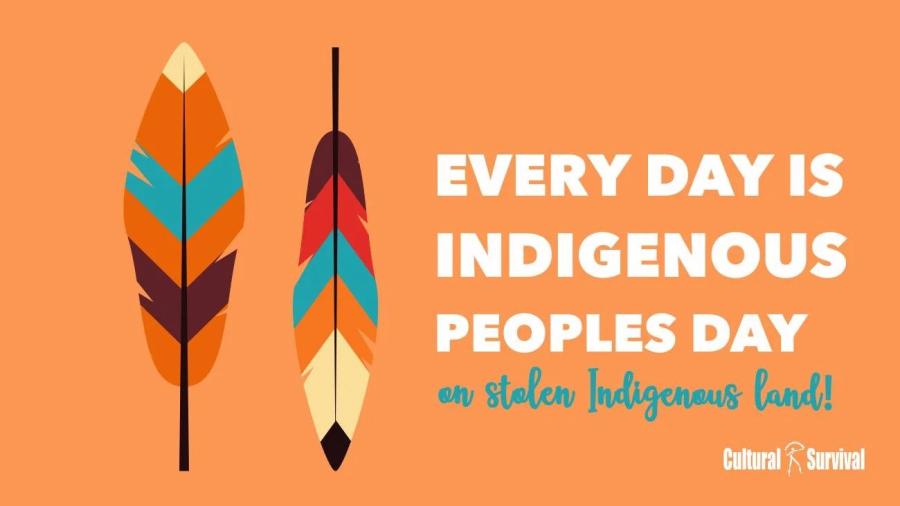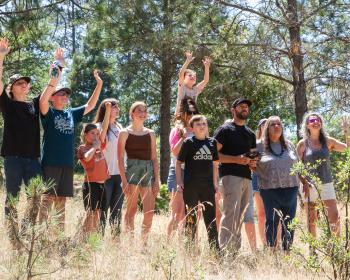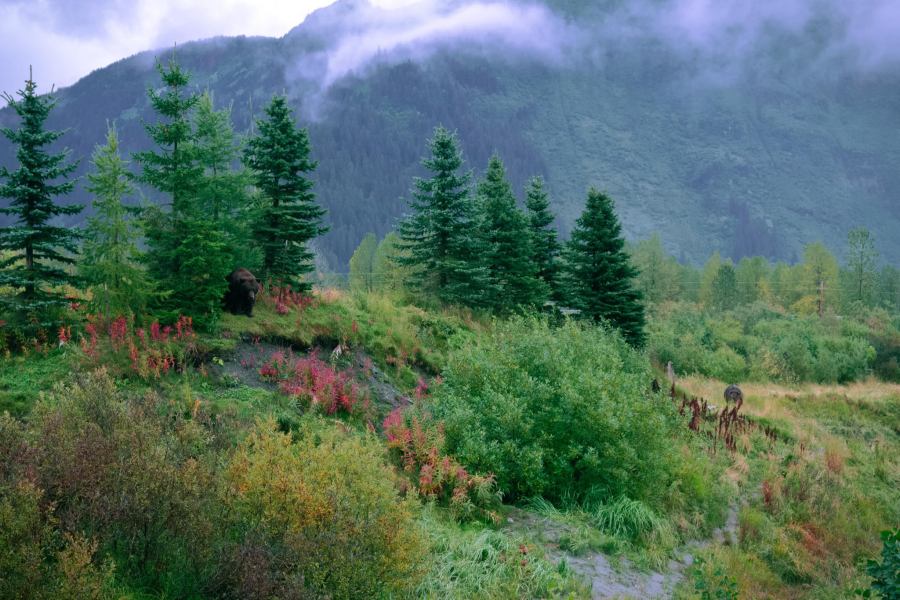Thanks to American imperialism, the ideology that the United States has no overseas colonies and is, in fact, the champion of self-determination the world over, holds no greater sway than in the United States itself. To most Americans, then, Hawai'i is theirs: to use, to take, and, above all, to fantasize about long after the experience.
Just five hours away by plane from California, Hawai'i is a thousand light years away in fantasy. Hawai'i, as an image of escape from the rawness and violence of daily American life, is mostly a state of mind. Above all, Hawai'i is "she," the Western image of the Native "female" in her magical allure.
To Hawaiians, daily life is neither soft nor kind. In fact, the political, economic and cultural reality for most Hawaiians is hard, ugly, and cruel.
In Hawai'i, the destruction of our land and the prostitution of our culture is planned and executed by multi-national corporations, by huge landowners, and by collaborationist state and county governments. The ideological gloss that claims tourism to be our economic savior and the "natural" result of Hawaiian culture is manufactured by ad agencies, tour companies, and the state of Hawai'i which allocates some $60 million dollars a year to the tourism advertising budget. As for the local labor unions, both rank and file and management clamor for more tourists, while the construction industry lobbies for larger resorts.
Despite our similarities with other major tourist destinations, the statistical picture of the effects of corporate tourism in Hawai'i is shocking.
Fact: Nearly 40 years ago, at statehood, Hawai'i residents outnumbered tourists by more than 2 to 1. Today, tourists outnumber residents by 6 to 1; they outnumber Native Hawaiians by 30 to 1.(1)
Fact: Tourism has been the single most powerful factor in crime rate, including crimes against people and property.(2)
Fact: Tourism is the major source of population growth. Moreover, that growth ensures the trend toward a rapidly expanded population that receives lower per capita income.(3)
Fact: Tourism drives up the cost of single family housing. As a result, families spend a large share of their income on housing.
Fact: A tourism economy encourages foreign investment, which drives up inflation, and thus the cost of living.
Fact: Nearly one-fifth of Hawai'i's resident population is classified as near-homeless, which explains the concomitant rise in beach villages and other homeless enclaves in Hawai'i.(4)
Fact: The very high cost of living in Hawai'i has encouraged the Native people to leave their island home in search of better economic conditions on the American continent. As a result, diaspora increases while new immigrants arrive from Asia.
The mass nature of corporately-controlled tourism results in megaresort complexes on thousands of acres with demands for water and services that far surpass the needs of Hawai'i residents. These tourist complexes boast several hotels, golf courses, restaurants, and other entertainments. Infrastructure is usually built by the developer in exchange for approval of more units. The island of O'ahu, with the major resort of Waik...k..., is the site of four major tourist destinations, over 800,000 residents, military installations that control 30% of the island, and the center of Hawai'i business in the capital of Honolulu. Currently, the island, which has an area of only 607 square miles, is visited by some 5 million tourists annually.
In this context of mass-based tourism, a new kind of exploitation has been visited upon our Native people. I call it "cultural prostitution."
Prostitution here refers to the entire institution that defines a woman as an object of degraded and victimized sexual value for use and exchange through the medium of money. The prostitute is a woman who sells her sexual capacities and is seen, thereby, to possess and reproduce them at will, that is, by her very "nature." The prostitute and the institution that creates and maintains her are, of course, of patriarchal origin. The pimp is the conduit of exchange, managing the commodity that is the prostitute while acting as the guard at the entry and exit gates, making sure the prostitute behaves as a prostitute by fulfilling her sexual-economic functions. The victims participate in their victimization with enormous ranges of feeling, from resistance to complicity, but the force and continuity of the institution are shaped by men.
Hawai'i, our ancient and erotic land, is the female object of degraded and victimized value. Our '...ina, or lands, are no longer the source of food and shelter, but the source of money. Land is now called "real estate," rather than Papahanaumoku, "she who gives birth to islands."
Beautiful areas, once sacred to our people, are now the sites of expensive resorts; shorelines where net fishing, seaweed gathering, and crabbing occurred are more and more the exclusive domain of recreational activities such as sunbathing, windsurfing, and jet skiing. Even access to beaches near hotels is strictly regulated or denied to the local public altogether.
The Native phrase, m...lama `...ina - "to care for the land" - is used by government officials to convince locals that hotels can be built without damage to the environment. Hotel historians, like hotel doctors, are stationed in-house to soothe the visitors stay with the pablum of invented myths and tales of the "primitive."
High schools and hotels adopt each other and funnel teenagers through major resorts for guided tours from kitchens to gardens to honeymoon suites in preparation for post-secondary jobs in the lowest-paid industry in the state. In the meantime, tourist appreciation kits are distributed through the State Department of Education to all elementary schools. One film, unashamedly titled "What's in it for Me?," was devised to convince locals that tourism is, as the newspapers never tire of saying, "the only game in town."
While this propaganda is churned out to local residents, the commercialization of Hawaiian culture proceeds with calls for more sensitive marketing of our Native values and practices. After all, a prostitute is only as good as her income-producing talents. These talents, in Hawaiian terms, are the hula, our dance; our generosity, or aloha; the u'i or youthful beauty of our women and men; and the continuing allure of our lands and waters, that is, of our place, Hawai'i.
The selling of these talents must produce income. And the function of tourism and the state of Hawai'i is to convert these attributes into profit.
The first requirement is the transformation of the product, or the cultural attribute, much as a woman must be transformed to look like a prostitute, i.e. someone who is complicit in her own commodification. Thus hula dancers wear clown-like makeup, don costumes from a mix of Polynesian cultures, and behave in a manner that is smutty and salacious rather than powerfully erotic. In the hotel version of the hula, the sacredness of the dance has completely evaporated while the athleticism and sexual expression have been packaged like ornaments. The purpose is entertainment for profit rather than a joyful and truly Hawaiian celebration of human and divine nature.
The point, of course, is that everything in Hawai'i can be yours, that is, you the tourist, the non-Native, the visitor. The place, the people, the culture, even our identity as a "Native" people are for sale. Thus the word "aloha" is employed as an aid in the constant hawking of things Hawaiian. In truth, this use of aloha is so far removed from any Hawaiian cultural context that it is, literally, meaningless.
Thus, Hawai'i, like a lovely woman, is there for the taking. Those with only a little money get a brief encounter, those with a lot of money get more. The state and counties will give tax breaks, build infrastructure, and have the governor personally welcome tourists to ensure they keep coming. Just as the pimp regulates prices and guards the commodity of the prostitute, so the state bargains with developers for access to Hawaiian land and culture. Who builds the biggest resorts to attract the most affluent tourists gets the best deal: more hotel rooms, golf courses and restaurants approved. Permits are fast-tracked, height and density limits are suspended, new ground water sources are miraculously found.
Hawaiians, meanwhile, have little choice in all this. We can fill up the unemployment lines, enter the military, work in the tourist industry, or leave Hawai'i. Increasingly, Hawaiians are leaving, not by choice but out of economic necessity.
Our people who work in the industry -- dancers, waiters, singers, valets, gardeners, housekeepers, bartenders, and even a few managers -- are very poorly paid, considering the high cost of living in Hawai'i. Indeed, tourism is considered a low-paying service industry that, no matter the huge numbers of tourists, always generates low-income jobs.
Psychologically, our young people have begun to think of tourism as the only employment opportunity, trapped as they are by the lack of alternatives. For our young women, modeling is a "cleaner" job when compared to waiting on tables, or dancing in a weekly revue. But modeling feeds on tourism and the ever-present commodification of Hawaiian women. In the end, the entire employment scene is shaped by and depends upon tourists, and the selling of Hawai'i through the tourism industry.
Of course, many Hawaiians do not see tourism as part of their colonization. Thus tourism is viewed as providing jobs, not as a form of cultural prostitution. Even those who have some glimmer of critical consciousness don't generally agree that the tourist industry prostitutes Hawaiian culture. This is a measure of the depth of our mental oppression: we can't understand our own cultural ghettoization because we are living it. As colonized people, we are colonized to the extent that we are unaware of our oppression. When awareness begins, then so too does de-colonization. Judging by the growing resistance to new hotels, to geothermal energy and manganese nodule mining, which would supplement the tourist industry, and to increases in the sheer number of tourists, de-colonization has begun.
(1) Eleanor C. Nordyke, The Peopling of Hawai'i (Honolulu: University of Hawai'i Press, 2 ed., 1989) pp. 134-172
(2) Meda Chesney-Lind, "Salient Factors in Hawai'i's Crime Rate," University of Hawai'i School of Social Work.
(3) Nordyke, Ibid.
(4) This is the estimate of a state-contracted firm that surveyed the islands for homeless and near-homeless families. Testimony was delivered to the state legislature, 1990 session.
Article copyright Cultural Survival, Inc.



